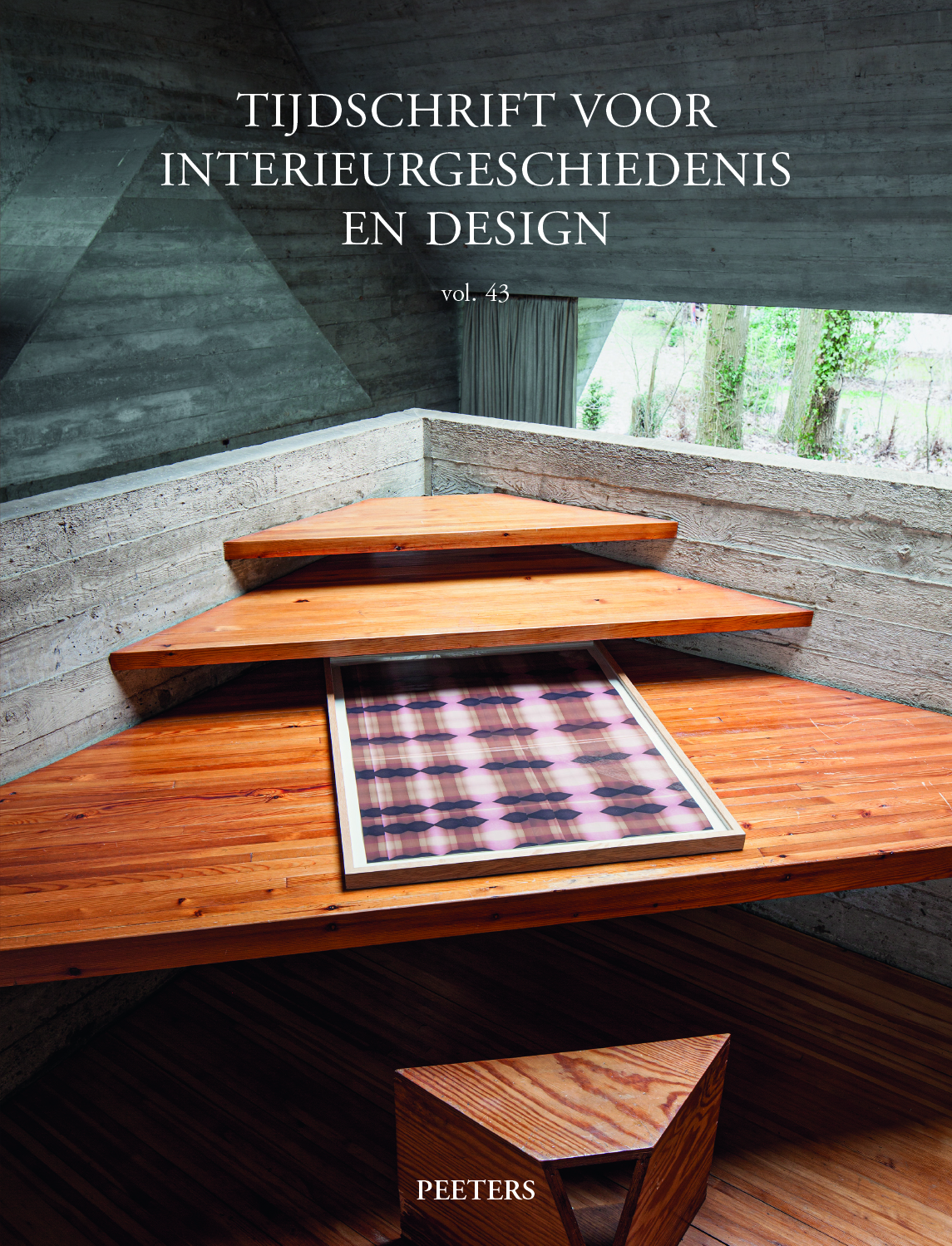 previous article in this issue previous article in this issue | next article in this issue  |

Preview first page |
Document Details : Title: De monnik en de kroonprins Subtitle: Profane projecten van kerkelijk ontwerper Dom Martin tijdens het interbellum Author(s): GOUBERT, Ko Journal: Tijdschrift voor Interieurgeschiedenis en Design Volume: 43 Date: 2021 Pages: 65-83 DOI: 10.2143/GBI.43.0.3289233 Abstract : During the 1920s to 1950s, Dom Martin Martin osb (1889-1965) of Leuven’s Benedictine Mont César Abbey was among the foremost European designers of modern church silver and interiors. To this day his name remains a synonym for opulent, colourful designs, which combine calculated geometry with the most precious of materials. Torch bearers for ecclesiastical Art Deco design, Dom Martin’s creations quickly gained him international acclaim. Under the artist label La Croix Latine he collaborated closely with top artists and artisans, such as the renowned Brussels-based silversmiths Wolfers Frères, who helped bring his visions to life. The rich archives of Mont César Abbey are a crucial source for the author’s ongoing doctoral research into the work of Dom Martin and its relevance within the artistic and liturgical landscape of Belgium between the two World Wars. In recent years, more than three hundred previously unknown drawings, dating from between c. 1925 and c. 1940, and hundreds of personal letters, spanning the five decades between 1914 and 1965, came to shed new light on Dom Martin’s life and work. Not only do they add considerably to the body of ecclesiastical work, but these valuable new sources also brought to light hitherto unknown designs for civil furniture and silverware as well as funerary monuments. Although they represent but a small segment of his oeuvre, combined with the artist’s archive of correspondence, these cases contribute crucial insights to the global analysis of Dom Martin’s artistic work. Taking as a touchstone several commissions for the French royal family – exiled near Brussels at that time – and the Count of Paris, Crown Prince Henri d’Orléans (1908-1999), a patron and a life-long friend of Dom Martin’s, the author explores some of the new insights to be gleaned from the designer’s personal correspondence and artistic archive. The renovation of a royal castle, politically inspired ceremonial silver objects, unique display furniture for the La Croix Latine gallery, and homely furniture and silverware for clients who had befriended him, constitute the specific case studies examined in this essay. Although Dom Martin’s ecclesiastical work remained his core business, it is surprising that, apart from design drawings and the final products, the details of specific commissions have been documented only very rarely. As the physical nature of drawings and plans helps the author to unravel the genesis of Dom Martin’s creations, the correspondence lays bare the intricacies of his network, design methodology and work ethic. Dom Martin is revealed as a passionate designer, almost obsessed with perfection in the smallest of details, and always aiming to strike a balance between a visually pleasing aesthetic and optimal user comfort. For the first time, this alternative look at the man and his work provides greater insights into an intriguing and versatile designer who counted mitred and crowned heads from Leuven to Lisbon amongst his favoured clients. |
|


